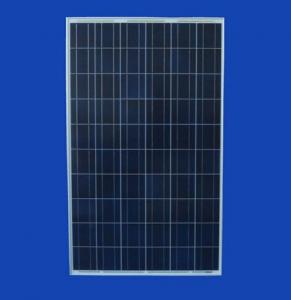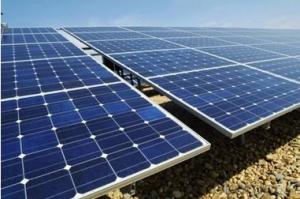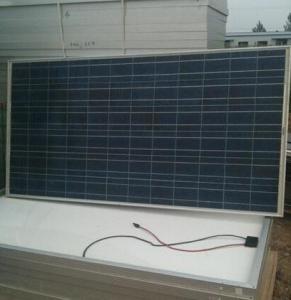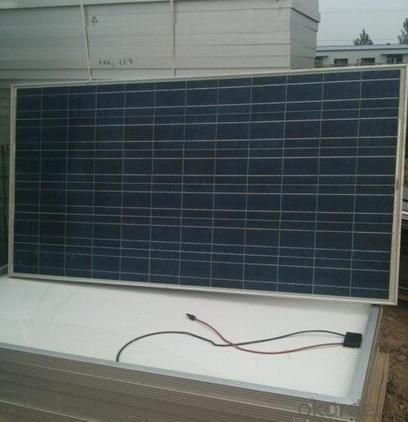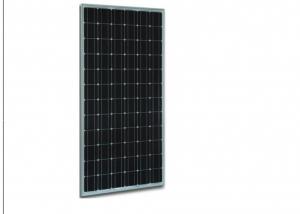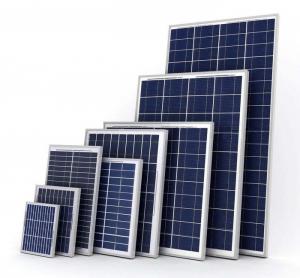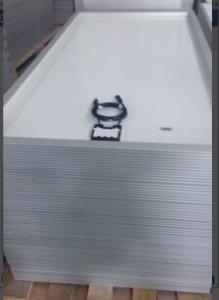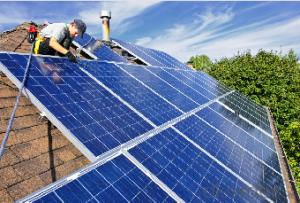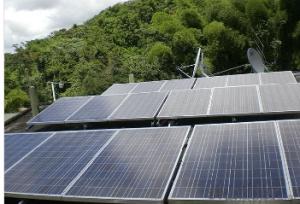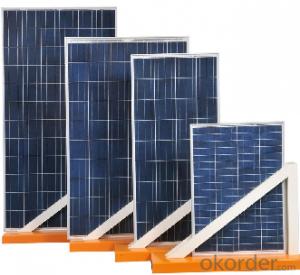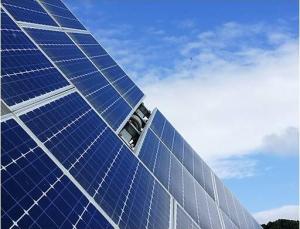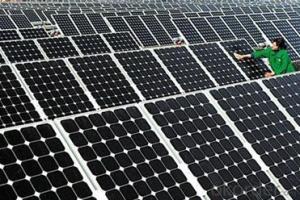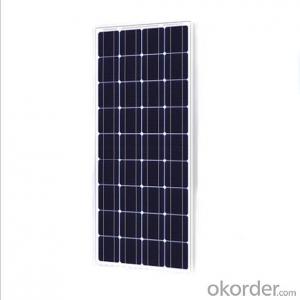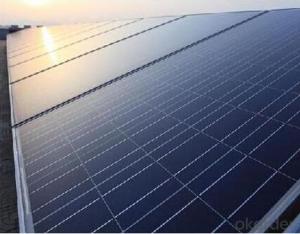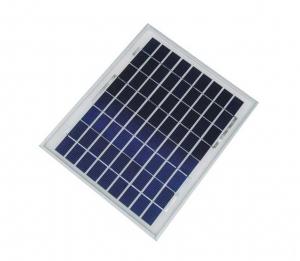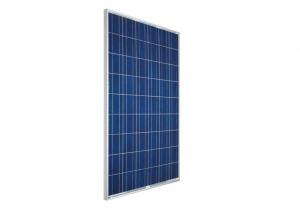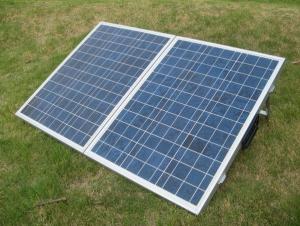120 Watt Polycrystalline Silicon Solar Modules 60cell-255w
- Loading Port:
- China Main Port
- Payment Terms:
- TT or LC
- Min Order Qty:
- 1000 watt
- Supply Capability:
- 10000000 watt/month
OKorder Service Pledge
OKorder Financial Service
You Might Also Like
1. Structure of Polycrystalline Silicon Solar Modules 60Cell-255W Description
Solar panel refers either to a photovoltaics (PV) module, a solar hot water panel, or to a set of solar photovoltaics modules electrically
connected and mounted on a supporting structure. A PV module is a packaged, connected assembly of solar cells. Solar panels can be
used as a component of a larger photovoltaic system to generate and supply electricity in commercial and residential applications. Each
module is rated by its DC output power under standard test conditions, and typically ranges from 100 to 320 watts.
2. Main Features of the Polycrystalline Silicon Solar Modules 60Cell-255W
- High effi ciency, multicrystalline silicon solar cells with high transmission and textured glass deliver a module effi ciency of up to 16.0%,
minimizing installation costs and maximizing the kWh output of your system per unit area.
- Tight positive power tolerance of 0W to +5W ensures you receive modules at or above nameplate power and contributes to minimizing
module mismatch losses leading to improved system yield.
- Top ranking in the “TÜV Rheinland Energy Yield Test” and the “PHOTON Test” demonstrates high performance and annual energy
production.
3. Polycrystalline Silicon Solar Modules 60Cell-255W Images
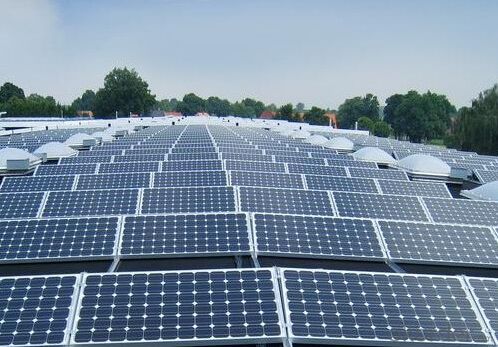
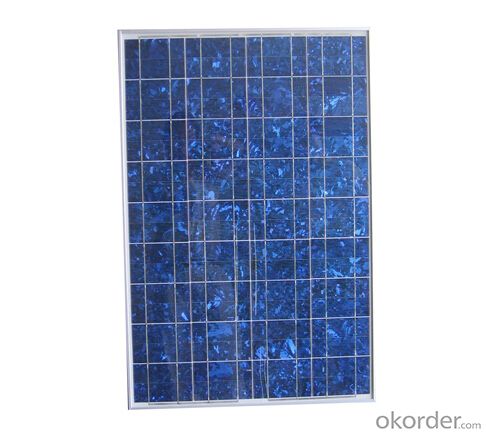
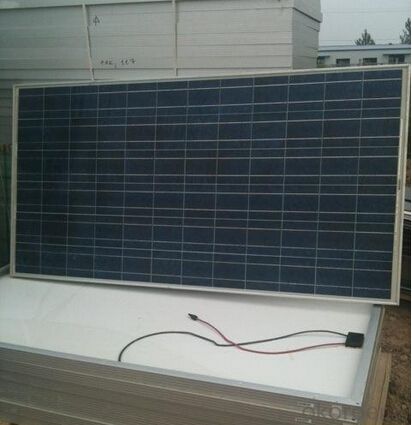
4. Polycrystalline Silicon Solar Modules 60Cell-255W Specification
窗体顶端 lectrical parameters at Standard Test Conditions (STC)窗体底端 | |||
Power output | P max | W | 255 |
Power output tolerances | ΔP max | W | 0 / + 5 |
Module effi ciency | η m | % | 15.7 |
Voltage at Pmax | V mpp | V | 30 |
Current at Pmax | I mpp | A | 8.49 |
Open-circuit voltage | V oc | V | 37.7 |
Short-circuit current | I sc | A | 9.01 窗体底端 |
5. FAQ of Polycrystalline Silicon Solar Modules 60Cell-255W
Q1:Can we visit your factory?
A1:Sure,welcome at any time,seeing is believing.
Q2:Which payment terms can you accept?
A2:T/T,L/C,Moneygram,Paypal are available for us.
Q3:How to guarantee the Quality of the products?
A3:We have established the international advanced Quality management system,every link from raw material to final product we have strict Quality test;We resolutely put an end to unQualified products flowing into the market. At the same time, we will provide necessary follow-up service assurance.
- Q: is this fact true? - its a limitation to solar panels during summer when it's in extremly hot countrie. I've heard it from my science teacher .. please give detail if you have any and any more benefits/limitations is welcomed .. Thank you :) !
- WHAT? This is far from the truth, IN Scottsdale Arizona a small apartment complex was fitted with solar {photo voltaic cells in the late 70s. Every summer they sold electricity back to the power company. It gets up to 5 fairly often here, and as hot as 23 in the shade. On a roof top it is over 50 in direct sunlight. The opposite is true. When it is cloudy they produce less electricity. They may loose some efficiency when it is very hot, but not enough to make them not work at all, or even enough to really harm the output to any really appreciable extent. A new plastic photovoltaic material that produces about 40-45% of a silicon based solar cell is a neat option as it works when it is very cloudy, you can drive nails through it, and it is flexible. I think these items are kept artificially expensive by big business, but this is just a biased opinion of mine, but as far as not working in extreme heat, NO these solar panels work just fine when it is hot. I am in Phoenix Arizona, and it does not get a whole lot hotter than here. If the cells from the 970s worked OK newer ones are better and will do just fine too. Solar hot water heaters are a slightly different matter as they will over heat the water and the water must be mixed with cooler water, or you can really get into trouble. Maybe this is what he meant. Still I doubt it is enough of an issue to cause the device to be less efficient than a gas water heater, or electric, etc. Maybe he is referring to having to mix cooler water into solar heated water in a solar hot water heater, or some other system, Photovoltaic cells do not have any problems rendering them useless from hot weather on this planet, and in fact, they are used in space and it gets much hotter there.
- Q: Also, where can solar panels be purchased in the Binghamton/Liberty/Jeffersonville area? Home Depot has some on their website I would like to see them in a store before purchasing or ordering them.
- Enacted okorder Hope that you find the above enclosed information useful. 09/9/20
- Q: does it mean that it can get that much in a day? Or like, in an hour?
- watt is a measurement of energy watt=3.4 BTU BTU(British thermal unit )=amount of energy to raise pound water degree f. us gallon water = 8.33 lbs can gallon water = 0 lbs depending if 0vac then a solar panel can light a 00 watt bulb or 6 5watt high efficiency bulbs
- Q: How do solar panels affect insurance rates?
- Solar panels can potentially lower insurance rates for homeowners. While the installation of solar panels adds value to a property, it also reduces the risk of damage caused by fire, as these panels produce electricity without combustion. As a result, insurance companies may offer discounts or lower premiums due to the reduced risk of fire-related claims. However, it's important to consult with your insurance provider to understand the specific impact on your insurance rates, as policies can vary.
- Q: Can solar panels be installed on a museum or cultural institution?
- Yes, solar panels can be installed on a museum or cultural institution. In fact, many museums and cultural institutions have embraced renewable energy and are installing solar panels to reduce their carbon footprint and energy costs. These panels can be placed on rooftops, parking lots, or even integrated into the building's architecture, providing a sustainable energy source while preserving the aesthetic appeal of the institution.
- Q: What is the most affordable, yet highest watt solar panels available?
- Those two requests are somewhat at odds with each other. Trina and Suntech make panels that are generally good value. You can search the web and find your best price. If this is for something that does not need to last long, you could get amorphous panels and save some money. But they will degrade quickly in a few months, then slowly over a few years.
- Q: How does the size of a solar panel affect its performance?
- The size of a solar panel directly affects its performance as it determines the amount of sunlight it can capture and convert into electricity. Generally, larger solar panels have more surface area to absorb sunlight, resulting in higher power output. A larger panel can generate more electricity, making it more efficient and productive than a smaller one. Additionally, larger panels often have more individual solar cells, which further enhances their performance and efficiency.
- Q: can i put a solar panel on a projector. if nt wat is a low energy projector that i can watch movies and play games on
- Unlikely to prove useful. Solar panels don't generate very much current. You would probably wind up spending several thousand dollars, and wind up with a solar panel array (including batteries and power inverter) that is certainly not portable. You will also need adequate current for your projection source (ie DVD player or computer), as well as sound. By and large, the cheapest projectors require the least amount of power. There is no way around the fact that, for a projector to be practical, it must output out a great deal of light. Adequate light requires adequate current.
- Q: How are solar panels made?
- Solar panels are made using a multi-step process that involves the production of silicon wafers, the application of various layers and coatings, and the assembly of individual cells into a panel.
- Q: Do LED lamps ever go bad?What's the life expectancy of solar panels?
- ED stands for light emitting diode, an electronic device which turns electric power into light with nearly perfect efficiency. When used in flashlight or othe battery powered lights, they will provide equal amounts of light for 00 times as long as ordinary incandescent light bulbs. Because of there very low power usage, led light are ideal for solar powered lighting systems. They are now made in every form and size, for DC or AC power, for homes, automobiles and outdoor lighting. Although they cost more, the savings from 20 year life expectancy and % power use mean savings of 95% over several years. sunsourcepower
Send your message to us
120 Watt Polycrystalline Silicon Solar Modules 60cell-255w
- Loading Port:
- China Main Port
- Payment Terms:
- TT or LC
- Min Order Qty:
- 1000 watt
- Supply Capability:
- 10000000 watt/month
OKorder Service Pledge
OKorder Financial Service
Similar products
Hot products
Hot Searches
Related keywords
